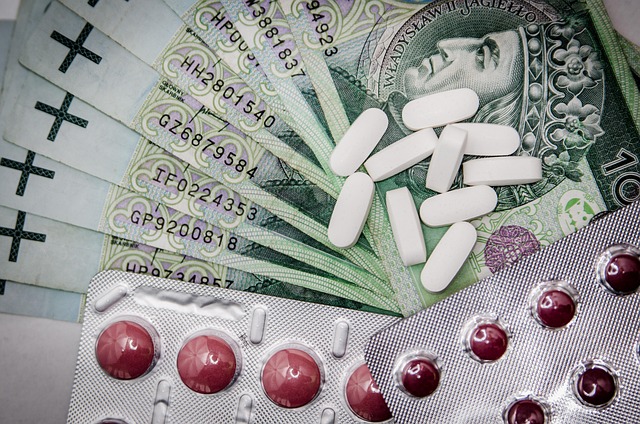Weight loss injections: effects, benefits, and costs in United States
Weight loss injections are gaining increasing popularity as a medical aid for weight loss. These specialized treatments can help people lose weight more effectively when conventional methods like diet and exercise alone aren't enough. But how exactly do these injections work, and what aspects should prospective users consider?

Medical weight management has evolved significantly with the introduction of injectable medications designed to assist individuals in achieving sustainable weight loss. These FDA-approved treatments represent a clinical approach to addressing obesity, particularly for patients who have not achieved desired results through traditional diet and exercise alone.
The pharmaceutical landscape includes several types of injectable medications that target different biological pathways involved in weight regulation. Healthcare providers evaluate patient eligibility based on body mass index, medical history, and existing health conditions before prescribing these treatments.
What are weight loss injections and how do they work?
Weight loss injections function through various mechanisms that influence appetite regulation and metabolic processes. GLP-1 receptor agonists, one category of these medications, mimic hormones naturally produced in the intestines that signal satiety to the brain. These injections slow the rate at which food moves through the digestive system, creating prolonged feelings of fullness after meals.
Another mechanism involves targeting specific neurotransmitter pathways in the brain that control hunger and food cravings. Some medications combine multiple active ingredients to address different aspects of weight regulation simultaneously. Patients typically self-administer these injections weekly or monthly, depending on the specific medication prescribed.
The injection process involves subcutaneous administration, usually in the abdomen, thigh, or upper arm. Healthcare providers provide detailed training on proper injection techniques, storage requirements, and dosage schedules to ensure safe and effective treatment.
Benefits of weight loss injections
Clinical studies demonstrate that prescription weight loss injections can produce significant weight reduction when combined with lifestyle modifications. Patients often experience decreased appetite within the first few weeks of treatment, leading to reduced caloric intake without the intense hunger associated with traditional calorie restriction.
Beyond weight loss, these medications may provide additional health benefits including improved blood sugar control, reduced blood pressure, and decreased cardiovascular risk factors. Some patients report improved energy levels and enhanced quality of life as they achieve their weight loss goals.
The structured nature of injection therapy can help establish consistent medication routines, potentially improving treatment adherence compared to daily oral medications. Healthcare monitoring throughout treatment allows for dose adjustments and management of any side effects that may occur.
Results of weight loss injections
Clinical trial data indicates that patients using prescription weight loss injections typically lose between 5-20% of their initial body weight over 12-18 months of treatment. Individual results vary based on factors including starting weight, adherence to medication schedules, dietary changes, and physical activity levels.
Most patients begin experiencing appetite suppression within the first 1-2 weeks of treatment, with noticeable weight loss occurring within the first month. The rate of weight loss typically slows after the initial months as the body adjusts to the medication and reaches a new equilibrium.
Long-term studies suggest that continued treatment is often necessary to maintain weight loss results. Patients who discontinue treatment may experience weight regain, emphasizing the importance of developing sustainable lifestyle habits during the treatment period.
| Medication Type | Provider/Brand | Monthly Cost Estimation |
|---|---|---|
| GLP-1 Receptor Agonists | Novo Nordisk | $800-$1,200 |
| Dual-Action Injections | Eli Lilly | $900-$1,400 |
| Compounded Alternatives | Local Pharmacies | $200-$500 |
| Clinical Programs | Weight Management Centers | $300-$800 |
Prices, rates, or cost estimates mentioned in this article are based on the latest available information but may change over time. Independent research is advised before making financial decisions.
Insurance coverage for weight loss injections varies significantly among providers and plans. Some insurance companies cover these medications when prescribed for diabetes management but may not provide coverage for weight loss indications alone. Patients often need to meet specific criteria, including documented weight loss attempts and obesity-related health conditions.
Manufacturer patient assistance programs may offer reduced-cost options for eligible individuals. Some healthcare systems provide comprehensive weight management programs that include medication costs within bundled pricing structures.
The investment in prescription weight loss injections should be considered alongside potential long-term health cost savings from improved metabolic health, reduced cardiovascular risk, and decreased need for obesity-related medical interventions. Healthcare providers can help patients evaluate the cost-benefit relationship based on individual circumstances and treatment goals.
This article is for informational purposes only and should not be considered medical advice. Please consult a qualified healthcare professional for personalized guidance and treatment.




